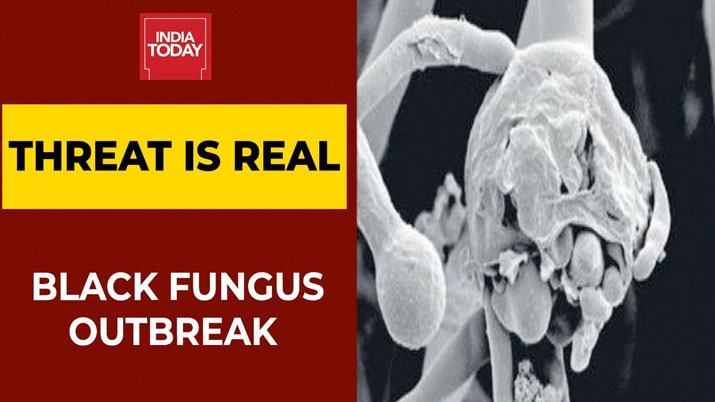India has battled a devastating second wave of COVID-19 that has crippled its health system and led to shortages of oxygen supplies. However, there is a massive decline in the number of cases in the past one month. The state government authorities implemented strict measures and imposed and followed a stern lockdown, proper vaccination programmes and the thoughtful cooperation of the citizens, this altogether led to a positive result in the decline of the cases. The chief of the state-run Indian Council of Medical Research said this month that districts with a high rate of infection should remain locked down for six to eight weeks to break the chain of transmission. India’s daily COVID-19 cases are decreasing after peaking on May 9. The government said on Sunday they conducted the highest number of COVID-19 tests, with more than 2.1 million samples tested in the previous 24 hours.
But, the country is facing another noxious condition i.e. the rise in the number of cases of black fungus. India has now been forced to declare the infection an epidemic. From reporting just a few cases last month the situation has now turned serious. The disease scientifically known as Mucormycosis is a complication associated with the virus. A few cases were reported in New Delhi last month with no loss of lives since then the infection has killed at least 219 people. The health ministry has asked the states to list it under the epidemic diseases act 1897 which basically means that every single confirmed or suspected case will directly have to be reported to the Union Health ministry.
According to the Indian Council of Medical Research (ICMR) four kinds of people are prone to get this infection. Those who used steroids during their COVID-19 treatment and end up with lower immunity and those who had prolonged stays at hospital ICU and are yet to recover.
Also, those with diabetes or a history of kidney and heart failure and those who are on medication for major health problems that reduce their ability to fight pathogens. The symptoms include pain under the eyes, one-sided facial swelling, nasal or sinus congestion, black lesions on the nasal bridge, stuffy or bleeding nose, toothache or loosening of teeth and partial loss of vision.
Mucormycosis can be categorized depending on which organ of the human body it attacks. Signs and symptoms of the infection also vary depending on the affected body part.
- Rhino orbital cerebral Mucormycosis: Infection occurs when fungal spores are inhaled. It infects the nose, orbit of eye / eye socket, oral cavity and can even spread to the brain. Symptoms include headache, nasal congestion, nasal discharge (green colour), pain in sinus, bleeding nose, swelling on face, lack of sensation on face and skin discoloration.
- Pulmonary Mucormycosis: When spores are breathed in and reach the respiratory system, it affects the lungs. Symptoms are fever, chest pain, cough and coughing of blood.
The fungus can also infect the gastrointestinal tract, skin, and other organs but the most common form is Rhino cerebral Mucormycosis.
After infecting a person, the Black Fungus does not remain static, it spreads through the nose, attacks the eyes and then reaches the brain. If the infection reaches the brain, it becomes difficult to treat the patient and the chances of survival are quite less. All the tissues infected must be surgically removed. Some patients end up losing the eye/s and, in some cases, the upper jaw. The wise use of steroids in consultation with a doctor and controlling sugar level is a must. Patients might need an intravenous anti-fungal procedure spanning four to six weeks.
Meanwhile, the Centre has requested states to make it a notifiable disease. It is also taking steps to address the shortage of Amphotericin B, the drug required to treat the disease. As many as 20 vials of this injection are required to treat each infected person with each vial costing between Rs 5,000 and Rs 6,000.


